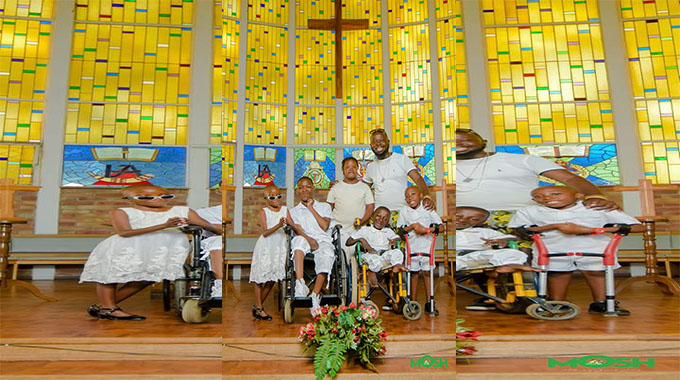Art as in-born talent
until one matures to become the very best in the field.
And there are so many examples to support the claim. Dominic Benhura was initiated into sculpture in the vast grazing fields of Kambarami in Murewa.
Starting like any other child – playing with the sticky clay, moulding different images of animals – Benhura was not conscious of the abundant talent overflowing in him.
He was just an ordinary boy who took up clay moulding more out of fun than anything that would transcend and transform him into the megastar he is today.
And if you visit him today to inquire about his route to fame he will obviously start with those meandering ordeals of his childhood playing in the fields and moulding animal images. He talks about the “Bulls”, which he says in vernacular “Bhuru”, which he tried each day in his early childhood to perfect.
He also talks passionately about how these early images have come to shape his visions and insights of art.
“The Breeding Bull”, one of his masterpieces, evokes the feelings and emotions of the rural surroundings in which he grew up. So he will go on and on as he talks about the way he was christened into sculpture, starting as an understudy of Tapfuma Gutsa and selling his first sculpture piece at the age of 12.
Through Benhura one is thus interfaced with the beauty of art and the beauty with which early talent identification brings.
Benhura is not just a national brand he is essentially a world brand, a man who has delivered excellent pieces of sculpture and has brought in new techniques to stone carving.
In keeping with the tradition of identifying and nurturing talent at peripheral levels, the National Art Gallery in conjunction with Toyota Zimbabwe opened an exhibition featuring the works of schoolchildren.
The paintings are not mere outlines of paint sprouted on the canvas. The work by these kids reveals a high level understanding of art concepts and painting conventions.
The subject for their work – the Toyota car – which the sponsor of the exhibition prescribed for them – saw children coming out with various artistic projections of Toyota vehicles.
The paintings by the children bring a wave of hope for the art community as their mere presence communicates the future of Zimbabwe art.
It is clear from the way these children indulge in painting that art is their favourite preoccupation.
One can thus picture the children in a sort of deep in artistic introspection as they think of those images they see in every day life – the cars, some of them top of the range models, aeroplanes and electro-fired trains, among other things.
And they put these objects down, framing their art pages with dark or even light ink as they prepare to replicate these objects in art.
Some of these children were even more technical as they went for the right combinations of colour.
The cars came in different shapes and sizes. Some appeared more like remodifications of those versions of Toyota people are acquainted with but what is important, however, is the artistic instructions with which the children executed their work.
One finds everything worth noting in an art piece; the flair of aesthetic beauty, the outlines of serious creations, and the zeal to create work as original and distinct as any work by a serious artist.
Desire Chivanikire’s piece “Jungle Car” presents insights of artistic creativity in the junior artist, the model design of the “Jungle Car” seems to be a new discovery – a car fit for the rough terrain – is captured in the art piece by Chivanikire, who is under 12 years of age.
And the sponsor knew that such brilliant work cannot go without being celebrated.
They chipped in with prizes ranging from school fees to cash prizes.
The sponsor is acquainted with the laws of engagement. So the likes of Logan Bulawayo, who did the masterpiece “Toyota Vernus”, Desire Chivanikire’s “Jungle Car” and Savanna Kari’s “Trendy Pigris” received their prizes from Toyota Zimbabwe.








Comments